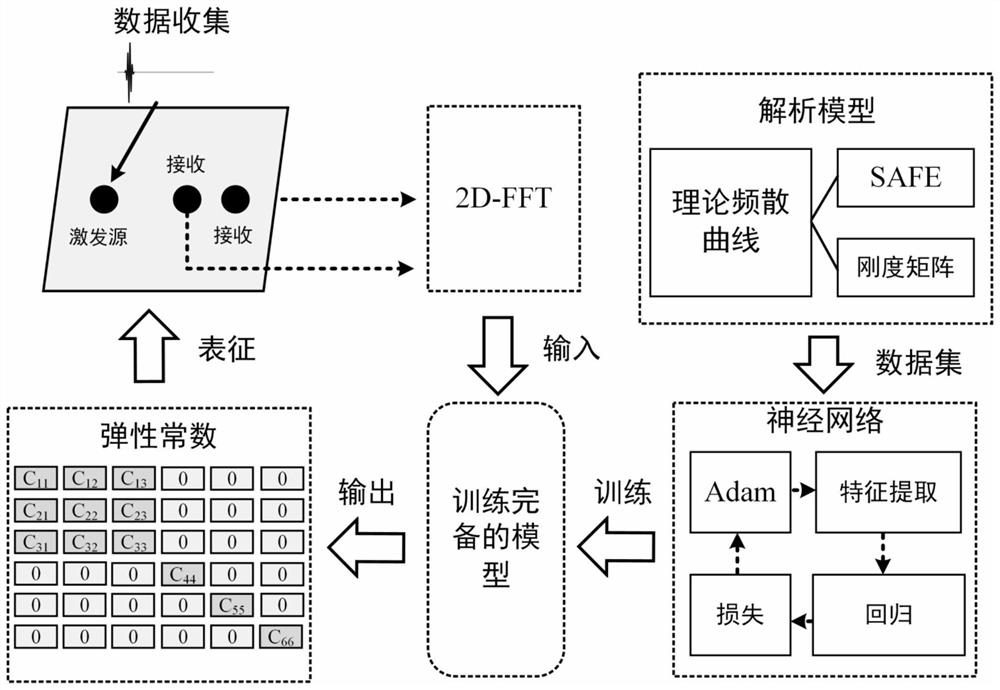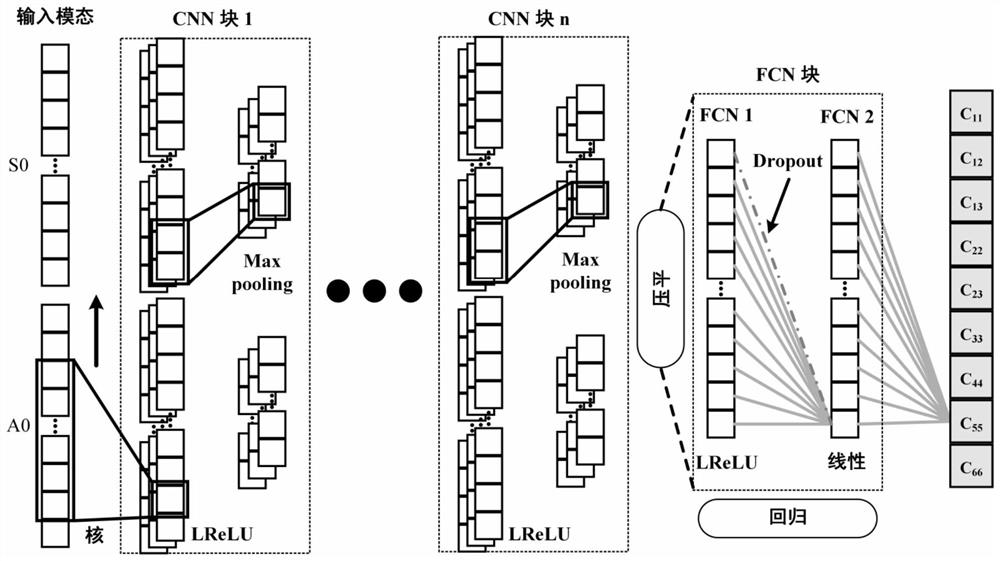Method for monitoring elasticity modulus of composite material based on deep learning
An elastic modulus, composite material technology, applied in the field of engineering acoustics, can solve the problems of difficult to characterize the elastic properties of composite materials, material performance degradation, etc., to achieve the effect of convenient use, low cost and high precision
- Summary
- Abstract
- Description
- Claims
- Application Information
AI Technical Summary
Problems solved by technology
Method used
Image
Examples
Embodiment Construction
[0043] In order to deepen the understanding of the present invention, the present invention will be further described below in conjunction with the accompanying drawings. This embodiment is only used to explain the present invention, and does not constitute a limitation to the protection scope of the present invention.
[0044] Such as figure 1 As shown, a specific embodiment of a method for monitoring the modulus of elasticity of a composite material based on deep learning, comprising the following steps:
[0045] Step 10: According to the elastic properties of the composite material, including density, thickness, orientation of reinforcing fibers, number of superimposed layers and elastic constants, use the semi-analytical finite element method to construct a data set suitable for deep neural network training;
[0046] Step 20: Install actuators and sensors in the composite material structure to be tested to transmit and receive guided wave signals;
[0047] Step 30: Using ...
PUM
 Login to View More
Login to View More Abstract
Description
Claims
Application Information
 Login to View More
Login to View More - R&D
- Intellectual Property
- Life Sciences
- Materials
- Tech Scout
- Unparalleled Data Quality
- Higher Quality Content
- 60% Fewer Hallucinations
Browse by: Latest US Patents, China's latest patents, Technical Efficacy Thesaurus, Application Domain, Technology Topic, Popular Technical Reports.
© 2025 PatSnap. All rights reserved.Legal|Privacy policy|Modern Slavery Act Transparency Statement|Sitemap|About US| Contact US: help@patsnap.com



